The 5 Best Places to See the Annular Eclipse
This article originally appeared on Outside
Get your eclipse glasses. An annular solar eclipse will be visible from the United States this fall, crossing North America on October 14, from 9:13 PDT to 12:03 CDT. The moon will pass between the sun and earth when it's at its farthest point from us, so it won't completely cover the sun but create a "ring of fire" in the sky for those in its path for about two to five minutes, depending on location, with about an hour of a partial eclipse on either side.
A solar eclipse, on its own, isn't that special an event. It happens twice a year somewhere on earth, when the orbit of the moon lines up to obscure the sun. But being in the right spot to witness that solar eclipse is special. The last total solar eclipse (where the sun is completely obscured by the moon) visible from North America happened in 2017. I got to witness the phenomenon from a beach in South Carolina with my young twins. The surrounding landscape went completely quiet as the sky darkened, as if all the insects and animals decided to take a siesta in the middle of the day. It was eerie and wild and fantastic.
Solar eclipses are either total, when the moon completely covers the sun; annular, when the moon as positioned covers the center of the sun but leaves an outer ring still visible; or partial, when the moon only covers part of the sun. Both total and annular eclipses can look like partial eclipses if you're not directly in line with the eclipse's path. The last annular eclipse visible from parts of the U.S. was in 2012.
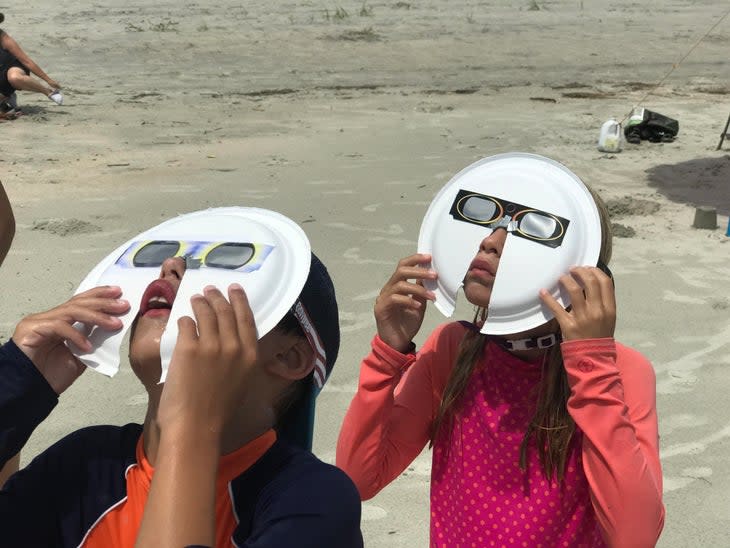
"Any one spot on earth has to wait, on average, 300 years for an eclipse to pass over them," says Tyler Nordgren, an astronomer who works with the National Park Service to promote dark-skies education.
Weather permitting, this year's annular eclipse should be visible from parts of the U.S., Mexico, and South and Central America. To see the show at its most dramatic, you want to be located somewhere along the path of annularity, meaning the swath of land that aligns directly beneath the celestial event. This eclipse will cut a diagonal line across the U.S., running from Oregon through Texas and hitting Nevada, Utah, and New Mexico. There isn't much you can do about the weather or clarity of skies, but you can put yourself in the path of annularity to make the most of the event.
A variety of national parks are ideal viewing locations for this eclipse, from Crater Lake National Park in Oregon to Padre Island National Seashore in Texas.
With Nordgren's help, we've outlined five amazing spots to watch the upcoming event. Don't fret if they don't align with your fall travel plans; even the farthest locations from the path of annularity in the U.S. will have a chance to see at least a partial eclipse on October 14. And let this event get you psyched for the total solar eclipse that will happen over the U.S. on April 8, 2024.
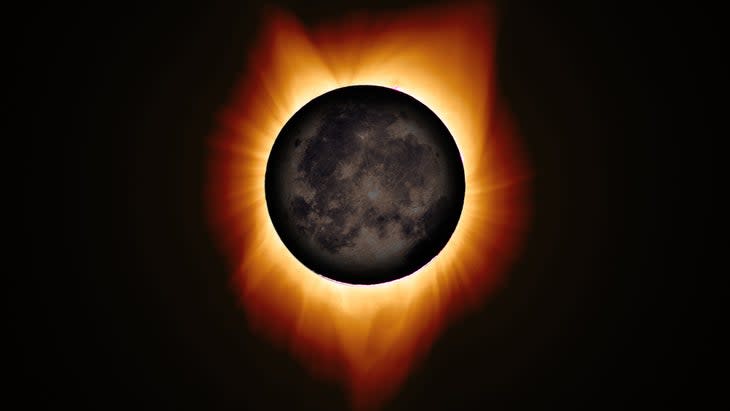
"I'll be in New York for the eclipse, which is about as far as you can get from the path of annularity, but it will still be impressive," Nordgren says. "It will look like someone has taken a big bite out of a flaming cookie."
Get yourself to a location along the path of annularity, like one of the spots detailed below, and the eclipse should be a beautiful ring of fire.
What You Need to Know
Safety first: Never look directly at the eclipse. You'll need solar-safe glasses that comply with the ISO 12312-2 international standard. Buy ahead in case of a shortage!
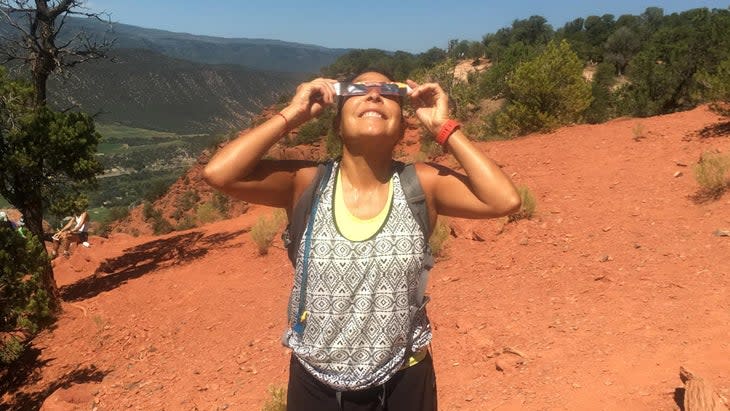
Mind your time zone: The eclipse will peak at 9:30 A.M. West Coast time / Pacific Standard Time and 12:30 P.M. on the East Coast / Eastern Standard Time. If you're in the path of annularity, the peak eclipse will last for two to five minutes, with about an hour of partial eclipse on either end.
Expect crowds: If you plan on visiting one of the national parks on this list, don't expect to be alone. Many parks will require shuttles into the park to cut down on congestion. It's all worth it.
Nordgren argues that being in a crowd is part of the experience. "You're all witnessing this alignment of the heavens together. There's a feeling of connection that's quite intense," he says.
1. Crater Lake National Park, Oregon
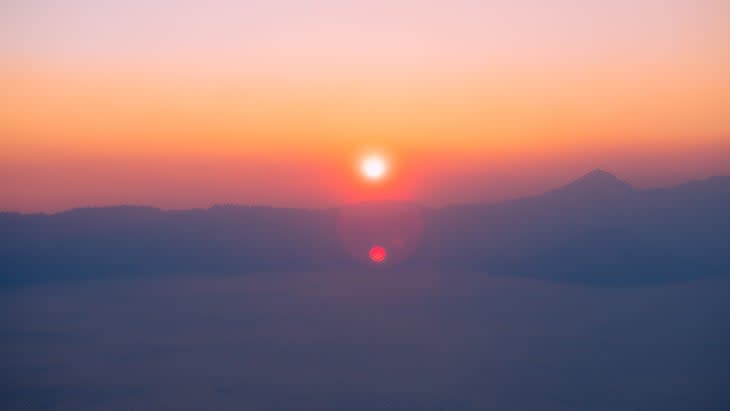
Crater Lake National Park, containing a 2,000-foot-deep natural lake in the center of a volcano, will be the first national park in the lower 48 directly in the eclipse's path of annularity. Because the eclipse will peak in the morning (9 A.M. there), you'll be able to see the phenomenon while the sun is lower on the horizon, with the entirety of Crater Lake in the foreground. There's no word yet from the park regarding specific sky-watching parties, although private guide companies that carry permits with the park are planning tours you can reserve now. If you want to go it on your own, the 33-mile Rim Drive will offer plenty of overlooks and short hikes leading to incredible vantage points.
Lodging inside the park could be tricky, as there's no camping there after September, but several gateway communities have ample amenities. Check out Crater Lake Resort for cabins and campsites south of the park. If you can't score a cabin there, look to the town of Klamath Falls, 35 miles south of the park, which has a variety of lodging options.
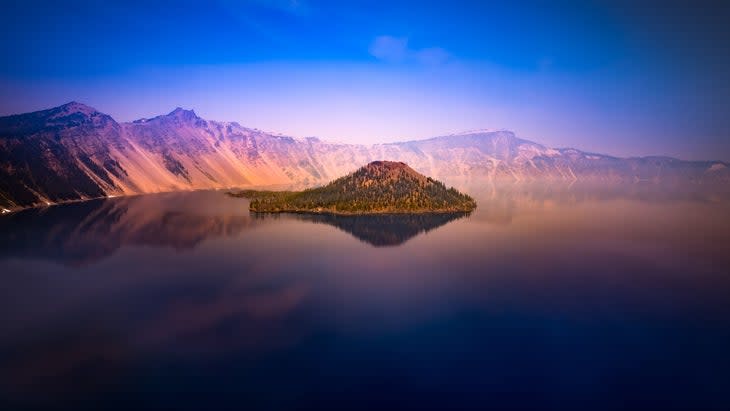
While You're There: Bring your fly rod and try to catch a kokanee salmon; the fish were stocked in the lake in the early 1900s and are still thriving. You can eat what you catch; there are no size restrictions or limits on the salmon. The three-mile out-and-back Cleetwood Cove Trail provides the only angler access to the lake.
2. Great Basin National Park, Nevada
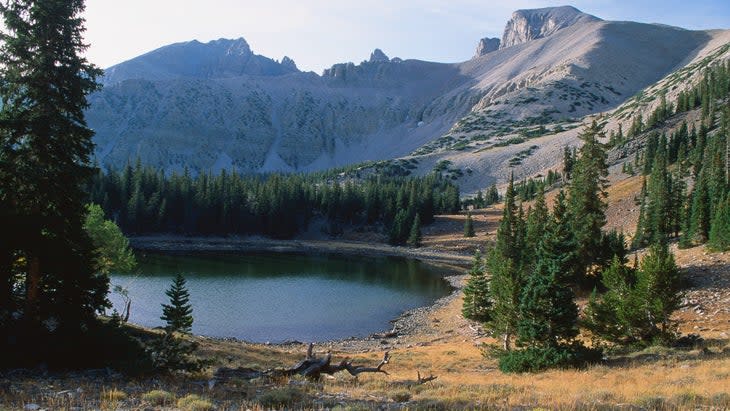
Great Basin National Park sits in the middle of the eclipse's path and is known for its clear skies (it's a designated International Dark Sky Park). Rangers are planning a viewing party for October 14 (details to be announced).
The park is remote enough that you shouldn't have to contend with massive crowds. You also have a great shot at scoring a campground; Lower Lehman Campground is first come, first served in 2023, and Upper Lehman Campground, which sits at 7,500 feet, is reservable a month in advance. The timing is ideal, too; the eclipse will occur just before the campground closes for winter on October 15.
While You're There: Take a ranger-led tour of Lehman Caves, through massive underground cathedrals that are full of classic stalagmites and stalactites, as well as the more rare "parachute shield" or umbrellalike formations.
3. White Sands National Park, New Mexico
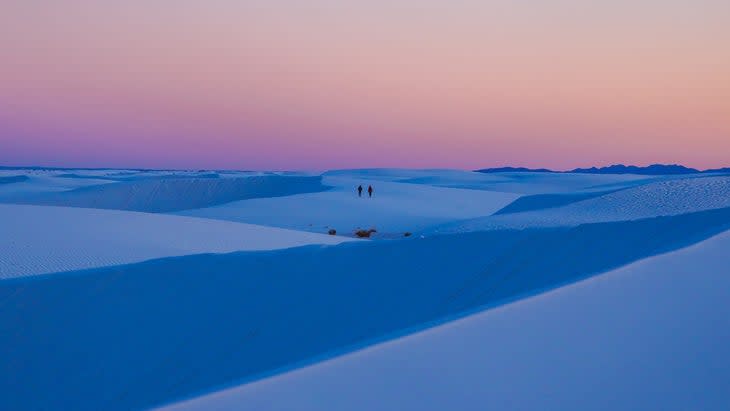
Could there be a better location to watch the moon obscure the sun than from a national park that makes you feel like you're on a lunar landing? White Sands protects the world's largest gypsum dune field, which covers 275 square miles in undulating waves of sugar-white sand.
You'll be able to see the eclipse from any spot within the park, but I say go all in on the moon-walk experience and hike a portion of the five-mile Alkali Flat Trail, which traverses through the heart of the dunes, until you find a sandy bump you like. There's no lodging or camping within the park (backcountry campsites are closed for rehabilitation), but nearby Oliver Lee Memorial State Park has sites you can reserve in advance. If that's booked, look to Las Cruces, 30 miles west, for hotels and resorts.
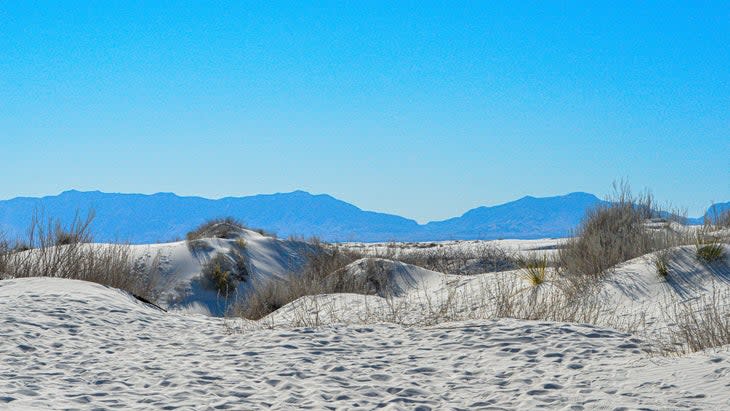
While you're there: Bring a sled (or buy one from the visitor center) and ride the snow-like dunes on the loop portion of Dunes Drive.
4. Bryce Canyon National Park, Utah
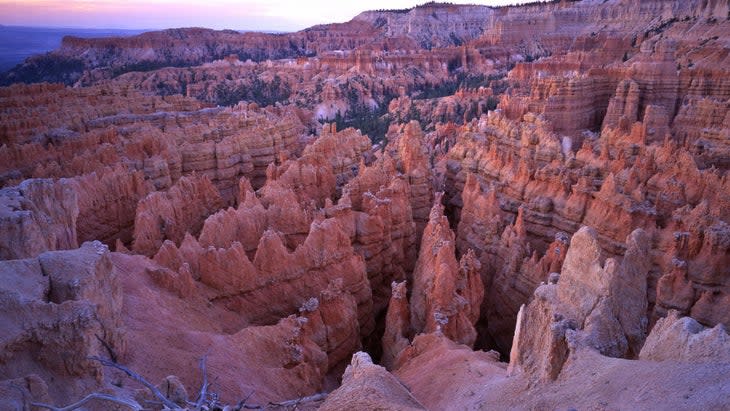
Bryce Canyon and its hoodoos are in the direct path of the eclipse, which is scheduled to peak at 10:28 A.M. Mountain Time, and the morning time should make for great photography as the sun is low on the horizon, hovering above the canyon and its hoodoos. Bryce is planning a ranger-led watch party, mostly likely at the visitor center, though details have yet to be released. I think seeing the eclipse from Sunrise Point, overlooking the Amphitheater, which is the largest and most dramatic collection of hoodoos within the park, would be pretty dope. Expect to take a shuttle if you want to view the eclipse from within the park, and keep an eye on this events page as details develop. Lodging within the park is scarce and books up months in advance, but there are plenty of options surrounding the park with open reservations.
While You're There: Bring a road bike and pedal a piece of Scenic Byway 12, considered one of the most beautiful highways in the country. The 124-mile blacktop connects two national parks, one national monument, and countless towering red cliffs. The 16-mile section from Panguitch to Bryce Canyon is stacked with roadside hoodoos.
5. Padre Island National Seashore, Texas
Padre Island is a narrow, wild barrier island in the Gulf of Mexico. Peak eclipse will hit the seashore at 11:56 A.M. Central Time, so the sun will be higher in the sky than in parks to the west, but the 66 miles of empty sand afford endless opportunities for a relatively uncrowded experience--especially if you bring a high-clearance four-wheel-drive vehicle, which will enable you to drive to the more isolated South Beach, which is open to driving and camping. No reservations are necessary; just grab a free camping permit at the park entrance.
While You're There: Bring your stand-up paddleboard and enjoy the calm Gulf right in front of your campsite. The super salty Laguna Madre is shallow and protected, making it perfect for beginners.
Graham Averill is Outside magazine's national parks columnist. He's not sure if he'll be able to line up his travels with the path of annularity in October, but he's excited to see the partial eclipse from a solitary mountaintop in his home state of North Carolina. His wife is already stocking up on solar-eclipse glasses.

For exclusive access to all of our fitness, gear, adventure, and travel stories, plus discounts on trips, events, and gear, sign up for Outside+ today.

